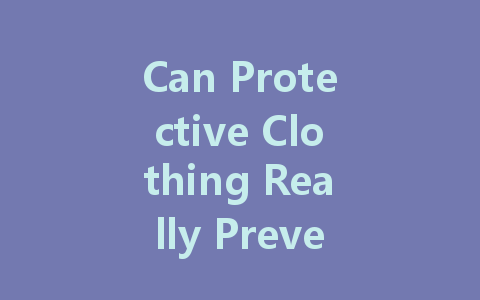Wasp stings can be painful and potentially dangerous, especially for those who are allergic to venom. Many people wonder if protective clothing can serve as an effective defense against these stinging insects. In this article, we will explore the functionality of protective clothing in preventing wasp stings, what types of protective gear are available, and tips for effective use.
Understanding Wasp Stings
Before discussing protective clothing, it’s important to understand the nature of wasps and their stings. Wasps can sting multiple times, and their venom can cause severe allergic reactions in some individuals. Symptoms of a wasp sting range from mild redness and swelling to more severe reactions such as anaphylaxis, which requires immediate medical attention. Understanding the threat they pose highlights the need for proper protection, especially if you’re working or spending time in areas where wasps are prevalent.
What is Protective Clothing?
Protective clothing is designed to shield individuals from various hazards, including chemicals, heat, and physical injuries. Specifically, when it comes to environmental threats like insects, certain types of clothing can minimize the risk of stings. This clothing usually consists of thick, tightly woven fabrics that are less likely to be pierced by a wasp’s stinger.
Types of Protective Clothing for Wasp Protection
When selecting protective clothing to guard against wasp stings, consider the following options:
Bee suits are often the go-to choice for beekeepers, but they can also provide excellent protection against wasps. These suits are made from heavy-duty cotton or synthetic materials that offer a barrier against stings. They typically feature a veil to protect the face and neck, where stings are more likely to occur.
Lightweight coveralls made from breathable, thick ткань can also be effective. Ensure that the coveralls fit snugly to prevent wasps from crawling underneath. Look for designs with elastic cuffs to minimize gaps at the wrists and ankles.
Wearing gloves is essential for protecting your hands. Opt for thick, padded gloves that are resistant to stings. Gloves made from leather or robust synthetic materials are generally reliable choices.
Many protective clothing kits include headgear to protect the face. This can be as simple as a wide-brimmed hat or a full-coverage bee veil with mesh screens for visibility. Protecting the head and neck is crucial, as these areas are often targeted by stinging insects.
Tips for Effectively Using Protective Clothing
While wearing protective clothing can significantly reduce your chances of getting stung, there are some best practices to maximize its effectiveness.
Ensure your protective clothing fits well. Loose clothing can allow wasps to crawl underneath and sting you. Therefore, opt for a snug fit while ensuring enough room for easy movement.
Before venturing outdoors, inspect your protective gear for any holes or tears. Damaged clothing may not provide the necessary protection.
If you encounter a wasp while wearing protective clothing, remain calm. Sudden movements can agitate the wasp, increasing the likelihood of stings. Slowly back away and avoid swatting at the insect.
For added protection, consider wearing multiple layers and additional barriers, such as long socks or ankle cuffs to cover exposed skin.
Limitations of Protective Clothing
While protective clothing is an effective deterrent against wasp stings, it’s not foolproof. Some wasps can still find ways to sting through fabric if it’s not adequately thick or if there are gaps. Furthermore, wearing protective clothing can lead to overheating in warm weather, so be mindful of the conditions during outdoor activities.
In Conclusion
Protective clothing can significantly reduce the chance of wasp stings when appropriately selected and utilized. By understanding the types of protective gear available and following essential tips for effective use, you can enjoy your time outdoors more safely. Always be aware of your environment, especially during peak wasp season, and consider additional precautions if you’re known to be allergic to wasp stings.

